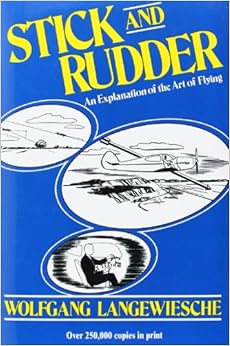It's VERY wordy, and spends a lot of that space making an argument that would have been controversial in 1938.
What, that nosewheels are better? That Ercoupes are too? He did write it circa 1938, so I'm missing your point. He was an engineer, yet wrote for the layman. I remember reading an article he had published in Harper's, IIRC,
The Wind That Blows Straight Up [EDIT: "Winds that blow straight up", Aug 1945]. I came across it in a textbook and recognized his name. It was cited there as an excellent example of making technical information understandable and interesting for the average reader. The "wind" was what has to be the dullest subject in ground school--the adiabatic lapse rate. He made it almost exciting to consider. Just a single paragraph:
"A puff of wind comes down the street. An old newspaper stirs in
the gutter, jumps up on the sidewalk, spirals up to second-story height
and flaps about there for a moment; then, with a new burst of energy, it sweeps upward again, and when you last see it, it is soaring high above the roof tops, turning over and over, blinking in the sunlight. The wind has picked up a piece of paper and blown it away. What of it? A generation ago, in philosophical discourse, one might have chosen this as an example of an event completely void of significance, completely chance. But not in the air age. The tiny occurrence demonstrates an important fact concerning the air ocean, one that is only now becoming the practical knowledge of practical airfaring men: there are winds which blow neither east nor west, neither north nor south, but in the third dimension: straight up."
He could have made his other points in a pamphlet, not a book.
I believe the book was a compilation of articles written and for and published in
Air Facts.
dtuuri


